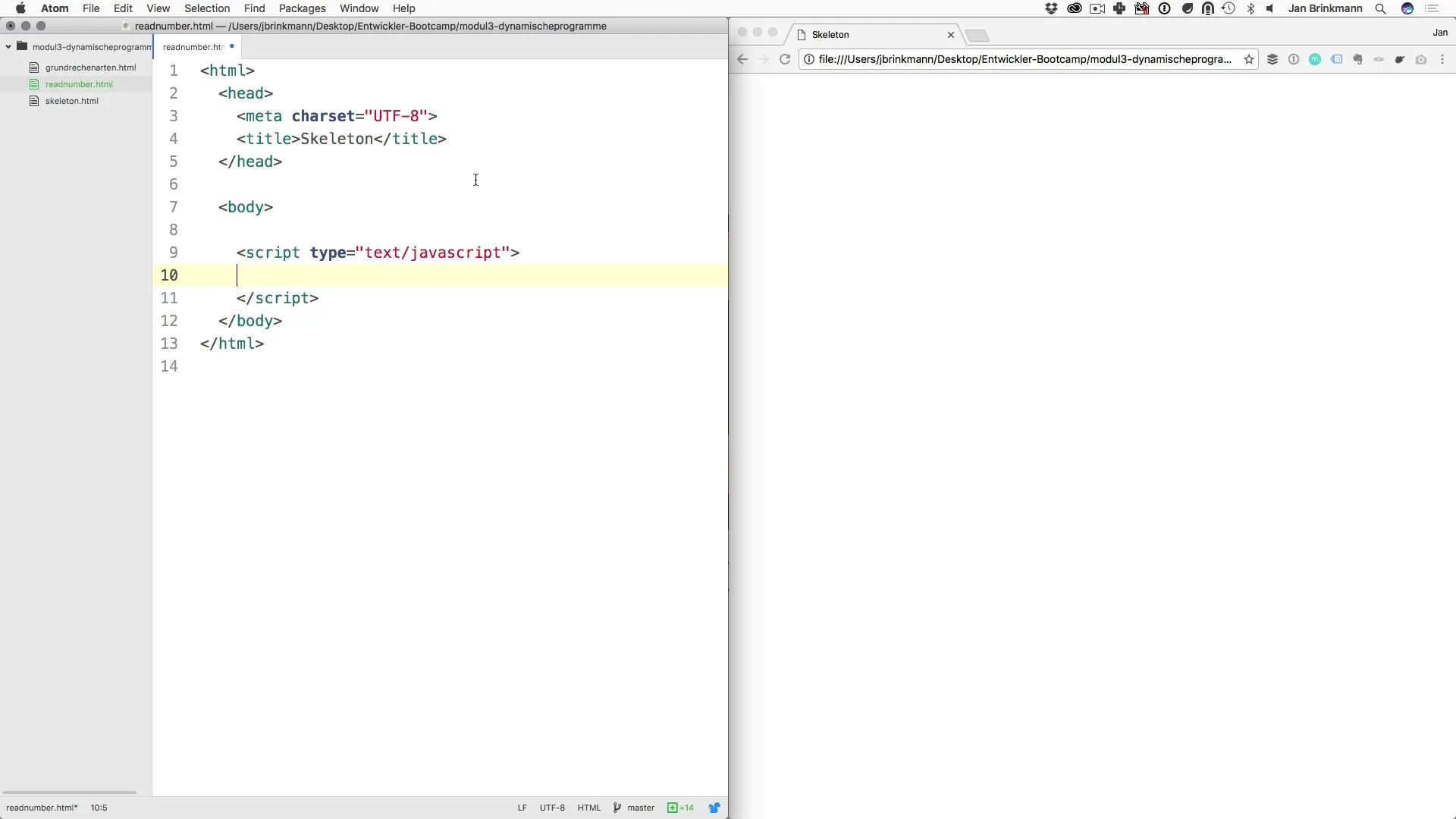The basics of programming require a certain understanding of different data types and their handling. If you have only worked with characters so far, it is now time to take the step into numerical values. In this guide, I will show you how to input and correctly process numbers. This is an essential part of programming to perform simple calculations and create useful applications.
Key insights
- Numbers should not be treated as strings in order to perform correct calculations.
- Using the parseInt and parseFloat functions is crucial for converting strings into numerical values.
- Understanding the differences between integer and float numbers is important for creating effective programs.
Step-by-step guide
To process numbers correctly in your programming, please follow these steps. Make sure to test each provided line of code in your environment.
Start by entering numbers into variables. A simple example could look like this: You create a variable for the first number and one for the second number.

Now that you have two input values, you may want to add the two numbers. However, it is important to understand that the values you receive from prompt are interpreted as strings. This means that if you enter the values 5 and 10, the result will be 510 and not 15. To solve this, we need to convert the strings into numbers. You can use the parseInt function to treat the values as integers.
It is now time to calculate the sum.
If you now run the script and enter the numbers 5 and 10, you will get the expected result: 15.
Here the problem becomes clear: Strings are too often simply concatenated, which does not represent the desired mathematical operation. This happens because prompt treats the inputs as strings. To ensure that you can work with numbers, you need to use the correct data type. A simple conversion using parseInt is the right way.
If you are working with decimal numbers, using parseInt will not be sufficient. For example: If you calculate 2.5 + 2.5, the result will not be 5 as desired. Instead, the decimal will be truncated, and you will only get a 2. In such a case, you should use the parseFloat function to ensure that you are working with floating-point numbers.
If you reload the script now and enter 2.5 for both numbers, you should get the result of 5. It is important to remember that this conversion to a float is crucial to keep the decimal places that are necessary for many applications.
Additionally, you should pay attention to choosing the data type correctly, depending on your application. Therefore, if you are only working with integers, stick with parseInt. In many complex calculations that rely on accuracy, using parseFloat is essential.
You may also consider creating a function that automatically decides whether the input should be treated as an integer or a float for specific scenarios. This could enhance the user experience and help ensure that your calculations are always correct.
Once you master these basics, many doors will open for you. With these new skills, you can develop simple calculators, currency converters, or more complex applications that require numerical input. Understanding how to safely process input values is the key to avoiding errors.
Summary - Entering numbers: Basics of software programming for beginners
In this guide, you have learned how to enter and correctly process numbers in your code. You now understand that it is important to use the correct data type and convert inputs in a timely manner. This enables you to perform effective calculations and expand your programming skills.
Frequently asked questions
How can I ensure that I am working with numbers in my program?Use the parseInt or parseFloat functions to ensure that input values are interpreted as numbers.
What happens if I use prompt without conversion?If you use prompt, you will receive a string. In mathematical operations, this may lead to incorrect calculations.
When should I use parseInt and when parseFloat?Use parseInt for integers and parseFloat for decimal numbers.
Can I create a function that automatically detects the data type?Yes, you can write a function that decides based on the input whether it should be treated as an integer or float.


